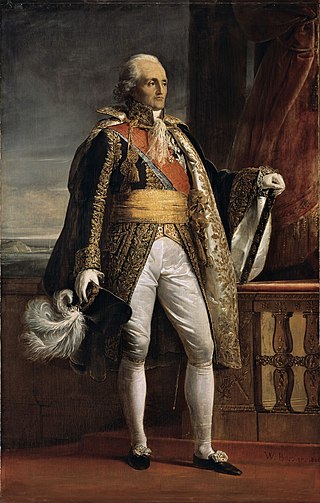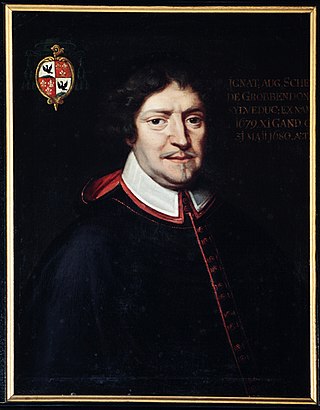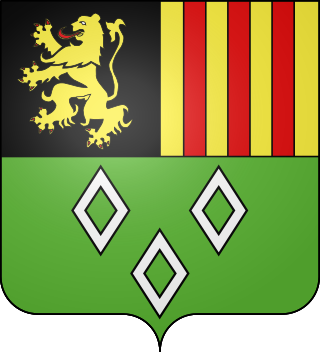Related Research Articles

Grobbendonk is a municipality located in the Belgian province of Antwerp. The municipality comprises the towns of Bouwel and Grobbendonk proper. In 2021, Grobbendonk had a total population of 11,249. The total area is 28.36 km2.

Durbuy is a city and municipality of Wallonia located in the province of Luxembourg, Belgium.
Lancelot was a knight of the mythical Round Table.

Bon-Adrien Jeannot de Moncey, 1st duc de Conegliano was a French military officer and a prominent commander in the French Revolutionary Wars and later a Marshal of the Empire during the Napoleonic Wars. He later became governor of the Hôtel des Invalides. Moncey is one of the names inscribed under the Arc de Triomphe, on Column 33.

The Van de Werve family is one of the oldest Belgian noble families from Antwerp that is still in existence.

The House of Ursel is the name of an old Belgian noble family of German origin. The Head of the House is styled as Duke of Ursel, while other members are styled as Count/Countess of Ursel.

AnthonieSchetz, was a Flemish military commander in Spanish service during the Eighty Years' War. He was baron of Grobbendonk, lord of Tilburg and Goirle, Pulle, and Pulderbos, and Wezemaal. He was the military governor of 's-Hertogenbosch until the town was lost to the Dutch in 1629, captain of a cavalry regiment, and a knight of the order of Santiago.
D. Felipe da Silva was a Portuguese soldier in the service of Spain.

Conrad Schetz de Grobbendonck, later Conrad d'Ursel (1553–1632) was a nobleman in the Habsburg Netherlands and in 1604–1609 the first ordinary ambassador to England for the Archdukes Albert and Isabella.

Lord of Grobbendonk is a feudal Flemish title originating from Grobbendonk. This title belongs today to the Belgian nobility.

The House of Schetz or Schetz de Grobbendonk, originally House von Schetzenberg is a German Noble House. Most famous is the Flemish branch named Schetz, one of whose members became the first duke of Ursel.

Ignacius Augustinus Schetz de Grobbendonk (1625–1680) was the 9th Bishop of Namur and the 11th Bishop of Ghent.

Gaspar Schetz (1513–1580), Lord of Grobbendonk, Hereditary Marshal of Brabant was a financier and statesman in the Habsburg Netherlands. For reasons that are unknown he was nicknamed "Corvinus".

Ladislaus / Lanseloet', sometimes Lanschot van Ursele or Lancelot II of Ursel (1499–1573), Knight, was Mayor of Antwerp.

The House of Glymes was an old Belgian noble family, an illegitimate branch of the House of Reginarid, which ruled the Duchy of Brabant. Glymes or Glimes is a municipality of Incourt. Their descendants of the branch of Grimberghen are styled as the Prince de Grimberghen.

Brimeu is a noble family, some members belonging to the Flemish aristocracy. Brimeux, previously in Flanders, is now in France.

Philippe François de Berghes (1646–1704) was a diplomat and military commander in the Spanish Netherlands and became the first bearer of the title of prince of Grimberghen.
The Marshal of Brabant is a hereditary royal officeholder and chivalric title at the Court of Brabant.
Conrad-Albert-Charles d'Ursel, 1st Duke d'Ursel and Hoboken was a Dutch nobleman and general.